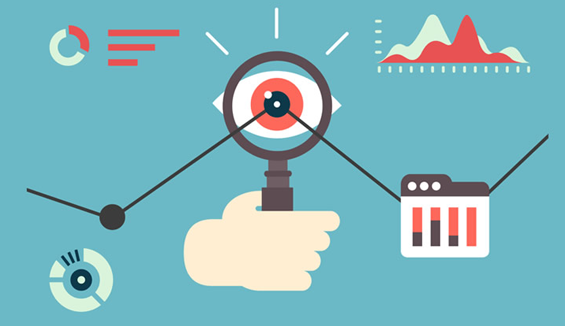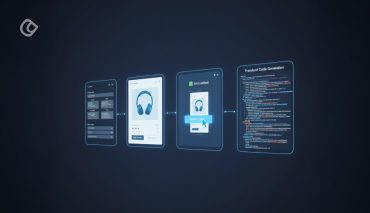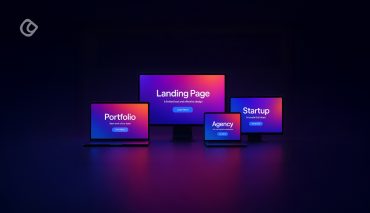You have developed a great product targeting a certain group of people. There is a huge crowd swarming in upon its launch. You have given your 100% to the product, and you believe it’s going to create an unbelievable excitement among the people. But, after a few days to your dismay, there are no customers or visitors to your site.
Where did you go wrong?
You failed to create an impression on your people, and there happens no interaction at all because you were unable to fulfil your promises.

All that people are searching for on a website is a great user experience that does not fail their expectations. When you cannot give them what they want, they will never come back to you.
So, what do you do here to ensure that you are doing the right thing?
Here is where we are going to need Usability Testing techniques.
Usability testing is the technique in which a set of users associated with a particular product will be asked to perform certain tasks. This will help you to evaluate the ease with which the product can be used, the time taken to perform a task and the product’s overall performance from the user’s viewpoint.
Every other product that is launched has a purpose to serve. And, if it is incapable of serving the user offering them with a friendly interface, then, it is useless.
When you work on developing a product, of course, you have an idea of what you are trying to provide and for whom. But, all these ideas are vague, and you will realize this when your product goes through the usability testing phase.
Your target audience will always expect something different and maybe more. Your brilliance lies in how capable you are at providing them with all they need.
Usability tests revolve around different goals as perceived by the users performing the test. You can consider the results of their test experiments as a baseline or control measurement. And, there is no extent to the number of tests that can be conducted within a given period. You could compare these results with the results of the baseline tests.
There must be some criteria across which the usability testing needs to be performed and here are these:
Efficiency: Efficiency lies in the time taken by the user to accomplish a task. For instance, if you are an E-commerce site, the efficiency of your site depends on the time and the number of steps that the users take tp complete the basic tasks.
Recall: This is, in fact, one of the most important aspects to examine the person’s memory concerning the browsing process and the interface they used a while ago.
Emotional response: This helps to analyze the user’s feelings after they have used the product. Some might feel happy while others might feel down and there are others who are so deeply impressed that they recommend the product to their friend.
The baseline defines a set of goals, but it is necessary that the tester sets some user-oriented goals that will help you to work further on developing your product.
Common misconceptions about usability testing:

People have a misconception that usability testing is all about collecting opinions about an object which is market research and nothing more.
But, we cannot define this under usability testing as it is more of a quantitative research and does not fall under the category of our discussion. We can convert this quantitative research into usability testing by applying a systematic observation procedure under controlled conditions.
Implementing a systematic approach will help you identify what your users are expecting and their familiarity with the product.
If the majority of people says that “the application works fine” it doesn’t mean that usability of your application has got a positive mark.
The application works but still you have no idea on what has to be worked upon for enhancing your product and its interface.
When performing usability testing, it is important that you get your users involved in the process as much as possible. Rather than asking silly questions like what they feel about the appearance of the interface ask them the level of comfort they experienced while performing the tasks.
For instance, the issues that the users encounter when they are browsing is something they might not be able to explain, but they can show it to you when they are experimenting.
How to perform usability test?

As you know, there are several methodologies or techniques related to usability testing that you can implement to know the level of comfortability of your users when they use your product.
Create a real-life scenario and get your participant to perform all the tasks during the test experimentations. The observers need to take a note of the experiences and emotions that the users face while the users are performing the usability tests.
Props such as the scripted instructions, paper prototypes, pre or post-test questionnaires are used to collect information and feedback regarding the product that is being tested.
The co-discovery learning, eye-tracking and think aloud testing technique are the testing techniques that are implemented throughout these methods.
Here, is a brief on the methods that are usually employed in usability testing:

Usability-Lab Studies: Here, the participants visit the lab along with an observer or researcher and are placed under a set of scenarios which result into certain tasks and the implementation of specific interests within the product or service.
Participatory Design: Here, the participants are provided with design components or creative materials where they can curate or exhibit their ideal experience in a detailed manner. It should examine the aspects that matter to them the most citing the reasons.
Interviews: The researcher or observer will meet up with each of the participants and discuss the topics in detail asking them their views.
Ethnographic Field Studies: Here, the researchers or observers will meet up with the target audiences in their real life scenarios and discuss how and where they are most likely to encounter the product or service.
Eyetracking: Eyetracking is usually accomplished by installing a device that captures the user interaction phases. It helps you to identify and measure where exactly the users are focusing when interacting with the websites, applications, physical products and environments.
Usability Benchmarking: There are certain predetermined measures to track performance and these are used to perform tightly scripted usability studies with a number of participants.
Focus Groups: A group of 3-12 participants are involved in a discussion related to a set of topics offering both oral and written feedback and suggestions through exercises and discussion.
Moderated Remote Usability Studies: These usability studies are remotely conducted using tools such as remote control capabilities and screen-sharing software.
Concept Testing: Here, the researcher or observer shares the approximation of a product or service that holds the value proposition of a new concept or product which helps to determine whether it helps to meet the demands of the target audience. It can be done with a group of participants or with single person and even online.
Unmoderated Remote Panel Studies: Here, a group of participants are trained and they have the video recording and data collection software installed over their personal devices and they can use this to access the website or product in question and have their experiences recorded. This experience is then viewed by the researcher or the company for further analysis.
Customer Feedback: A feedback link, button, form or Email are provided by the company or the researcher. The user needs to fill in these and the information can be open-ended or close-ended as per the discretion of the user panel.
Diary/ Camera Studies: Here, participants are provided with a particular mechanism that they can use to record or describe the aspects of their lives that are associated with the product or service.
Card Sorting: It is one of the qualitative or quantitative approaches that is implemented to help the users organize their items into groups and then assign a criteria to each of these groups. Here, we can get a glimpse into the users’ mind and the model of the working pattern that they are expecting by refining the information that they provide.
A/B testing: A/B testing is also referred to as live testing or bucket testing or multivariate testing. This is a scientific approach for testing diversified versions of the design on a website wherein you can assign random groups of users to interact with each of these designs and analyze and measure the effect of these assignments on their behavior.
Clickstream Analysis: This helps you to analyze the array of screens or pages that the users have clicked through and the view they are provided with as they use the software product or the website.
True-Intent Studies: With this method you can track the goals or objectives of the visitors who visit the site at random upon entering the site and also track their behavior. You can ask them questions like whether they were successful in their attempts.
Unmoderated UX Studies: This is another quantitative or qualitatively automated technique that implements a specialized research tool to capture the behavior of the participant by analyzing their behavior on computers/ browsers and their attitudes through survey questions. This is accomplished by providing them with goals or objectives that they need to accomplish.
Intercept Surveys: This is a survey that is implemented while the user is using the site or application.
Email Surveys: Here, the participants are recruited by messaging them via Emails.
Desirability Studies: This is a method where the participants will be offered with visual-design options and they are expected to answer these queries or match the visual designs with a set of parameters that they feel will fit into these from a given closed list of alternatives. It is effective from both qualitative and quantitative perspective.
Apart from these the remote usability testing and hallway testing are the two commonly used methodologies.
Hallway testing is usually implemented during the design stage and usually performed with a group of 6-8 people.
Expert review testing involves a number of field experts who will be testing the product or the website and then, providing their reviews.
Remote usability testing is implemented when the prospective users are from different parts of the world.
But, it is usually an expensive affair to perform a remote usability testing because of the risks involved when bringing together people from far and wide.
So, it is good if you can limit the number of users whom you are involving in the test process to minimum.
Also, it helps to provide quality results rather than focusing on quantity. You could fix around 5 participants for each test rather than including a number of participants in one go.
Usability is well identified when it is performed on a limited set of people at each stage rather than getting it done all at once on a large population. This is a proven fact.
It is recommended that these tests need to be carried out at least once in a week or twice in a week during the design phase. And, as the number of processes that are involved in the design process increases it would be great if you could bring about a hike in the number of tests too.
Also, when performing the usability test you need to note down not only the things that don’t work but also, the things that work fine and get these tested again and again. The components that do not work well either needs to be fixed or removed or the ones that work well needs to be kept the same as these are the ones that your users enjoyed.
What are the usability testing techniques that you are utilizing in your organization?
Share your thoughts, suggestions and feedback with us.
Acodez IT Solutions is a web design company in India offering a wide range of web design and development solutions to our clients in India and abroad. We utilize the latest trends and technologies to customize our web solutions. We are also into big data analytics and solutions. Acodez is also a SEO agency in India offering all kinds of inbound marketing and SEO solutions to our clients. For further inquires, contact us today.
Looking for a good team
for your next project?
Contact us and we'll give you a preliminary free consultation
on the web & mobile strategy that'd suit your needs best.










Hi…
You have wrote awesome content about Usability testing techniques. It is the best way to understand how real users experience your website or application.I love your blog. I will wait for your next post.